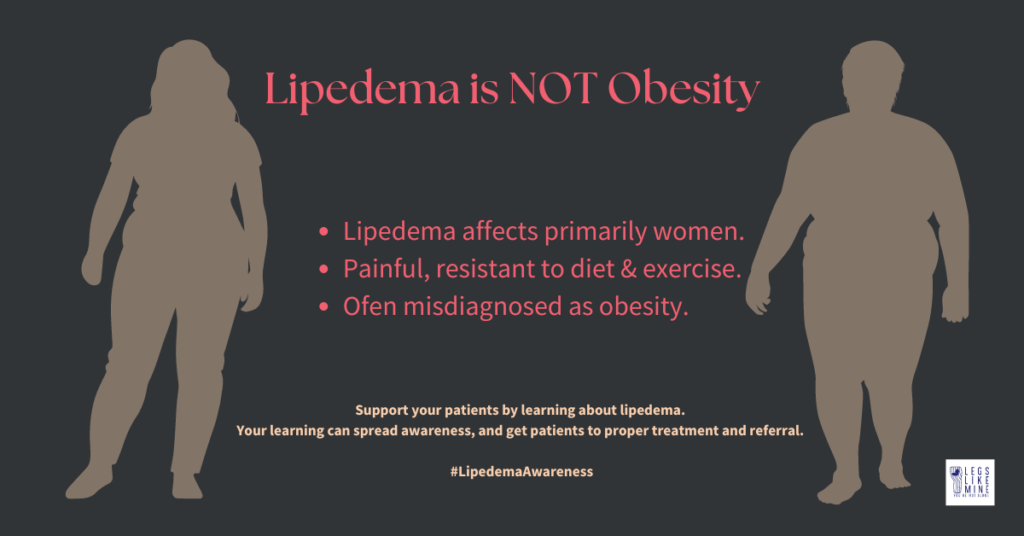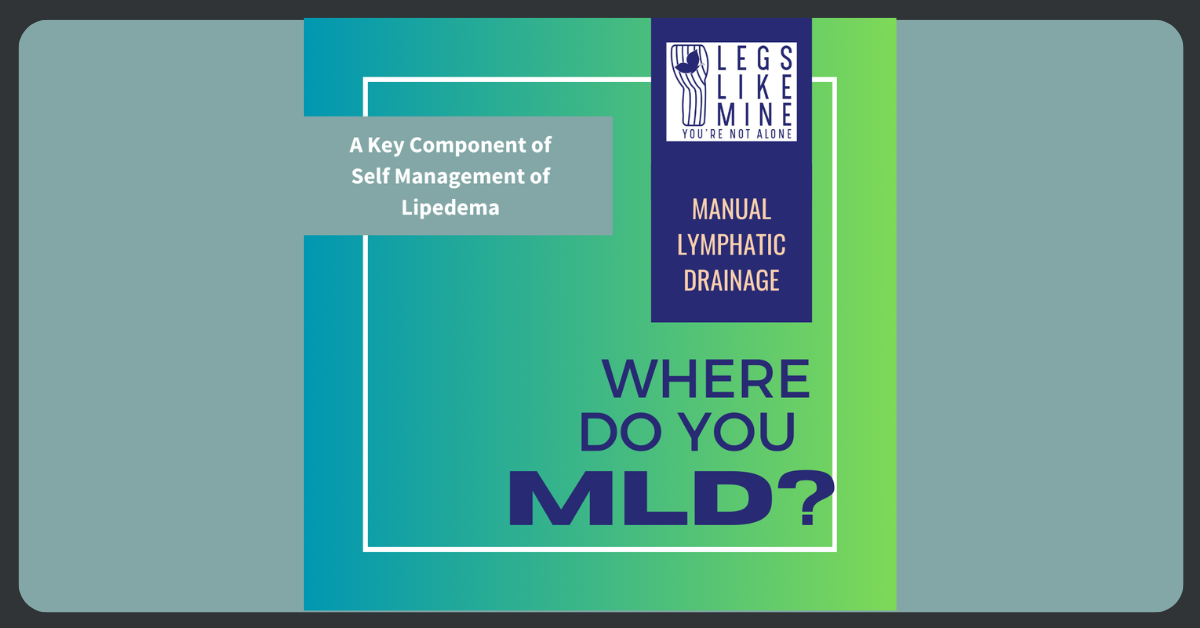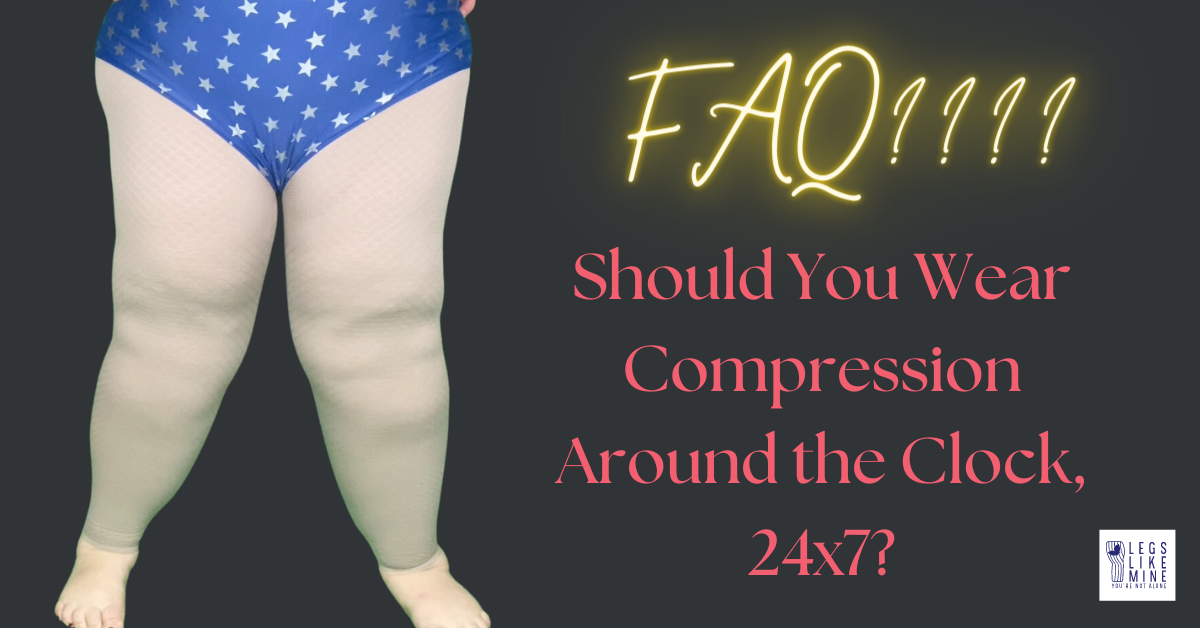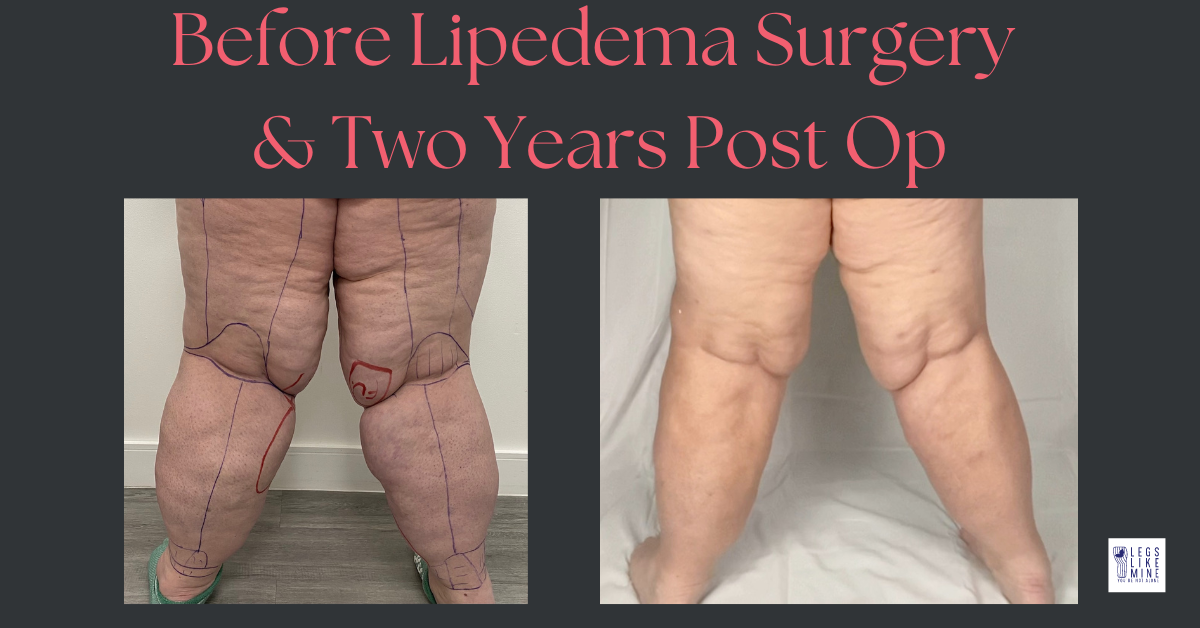Hi Friends!
Today I want to talk about the difference between obesity and lipedema. I recently was applying for a grant to raise lipedema awareness and was (initially) told that lipedema was covered under funding already set aside for “obesity,” so they wouldn’t grant the…grant. (LOL!) I almost lost my mind a little as I volleyed with the grant provider about how lipedema is not obesity and it is often misdiagnosed as obesity. While I still don’t know if I will be awarded the grant, I did have that moment to teach, so either way it will be a win.
Anyway, I’m putting this blog out here in case there’s someone searching for lipedema vs. obesity and they need a reference, so here you go. Lipedema is a chronic medical condition often mistaken for obesity due to its appearance, but it is distinct in several key ways. Understanding these differences is crucial for proper diagnosis and treatment.
What is Lipedema?
Lipedema is a disorder characterized by the abnormal accumulation of fat, primarily in the lower body, including the legs, thighs, and sometimes the arms. This condition is almost exclusively found in women and is believed to have a genetic and hormonal basis. It often begins or worsens during periods of hormonal change, such as puberty, pregnancy, or menopause. Lipedema is marked by pain, swelling, and easy bruising in the affected areas, and it does not respond to traditional weight loss methods like diet and exercise.
How is Lipedema Different from Obesity?
While both lipedema and obesity involve excess fat, they differ significantly in their characteristics and effects:
- Fat Distribution: In lipedema, fat is symmetrically distributed in the legs and sometimes the arms, sparing the feet and hands. In contrast, obesity typically involves a more uniform distribution of fat throughout the body.
- Symptoms: Lipedema is often painful and causes the skin to bruise easily, whereas obesity generally does not cause pain or bruising unless there are complications.
- Response to Weight Loss: Lipedema fat does not reduce with diet and exercise, unlike the fat associated with obesity, which can be managed through lifestyle changes.
- Metabolic Effects: Obesity is associated with metabolic issues such as diabetes, high blood pressure, and cardiovascular diseases. Lipedema, however, does not have these metabolic implications, although it can coexist with obesity, complicating the clinical picture.
Diagnosis and Treatment
Diagnosing lipedema can be challenging due to its similarities with obesity and lymphedema. Healthcare providers typically rely on physical examinations and patient history, as there is no definitive test for lipedema. While this isn’t mainstream yet, imaging studies like ultrasound and DXA scans may help in assessing the fat distribution, and there is ongoing research into putting this into standards of care. For more information on diagnosis, check out the Lipedema Foundation’s page on diagnosis here. Diagnosing Lipedema — Lipedema Foundation.
Treatment for lipedema focuses on managing symptoms and improving quality of life. Options include compression therapy, manual lymphatic drainage, and in some cases, liposuction to remove the affected fat tissue. Maintaining a healthy lifestyle with low-impact exercise can also help manage symptoms. In summary, while lipedema and obesity may appear similar, they are distinct conditions with different causes, symptoms, and treatment approaches. Proper diagnosis is essential to ensure effective management and improve patient outcomes.
I highly recommend taking a look at the Lipedema Foundation’s reference on this topic, located here. Obesity — Lipedema Foundation.
Hopefully this blog will help someone in the future. Stay well friends!
Susan










